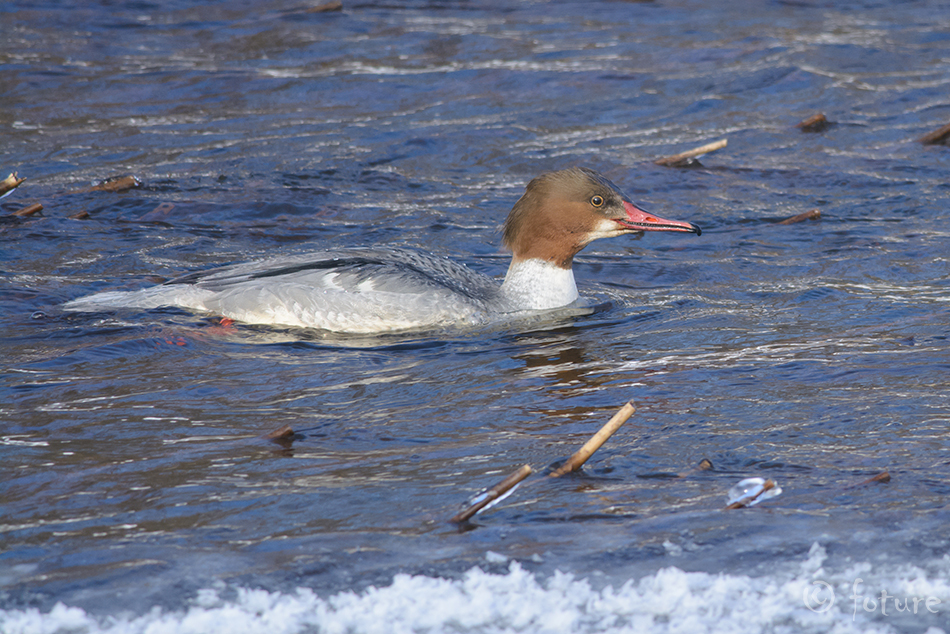
Lihavõtted! Sinikael-part võttis Pirita jõe külmikust väikese konnakujulise lihatüki ning valmistus seda nautima hakkama.
End of fasting! This Mallard found a frog-shaped piece of meat from the bottom of the Pirita river in Estonia and prepared herself for a feast.
 Kuid koheselt läks põrgu lahti! Isaslinnud kaotasid igasuguse džentelmenlikkuse ning otsustasid selle liha endale võtta. Ka jääkoskel haistis võimalust.
Kuid koheselt läks põrgu lahti! Isaslinnud kaotasid igasuguse džentelmenlikkuse ning otsustasid selle liha endale võtta. Ka jääkoskel haistis võimalust.

But then all hell broke loose! The male birds lost all their manners and decided to relieve the female from her catch. Goosander also saw an opportunity.
 Enamuse gängist suutis ta maha raputada, vaid üks näljane oli järelejätmatu.
Enamuse gängist suutis ta maha raputada, vaid üks näljane oli järelejätmatu.

She managed to leave most of the mob behind but one guy was relentless.
 Lõpuks!
Lõpuks!

Finally!
 Või siiski mitte... Eelmise ja selle foto vahe on 3 sekundit. Mina olin seal jõe ääres veel veerand tundi ning selle aja jooksul part oma eine kallale asuda igatahes ei jõudnud.
Või siiski mitte... Eelmise ja selle foto vahe on 3 sekundit. Mina olin seal jõe ääres veel veerand tundi ning selle aja jooksul part oma eine kallale asuda igatahes ei jõudnud.

Or not... The last photo was taken 3 seconds before this one. I was by the river for another 15 minutes and during this period the duck did not get the chance to start enjoying the meal.































